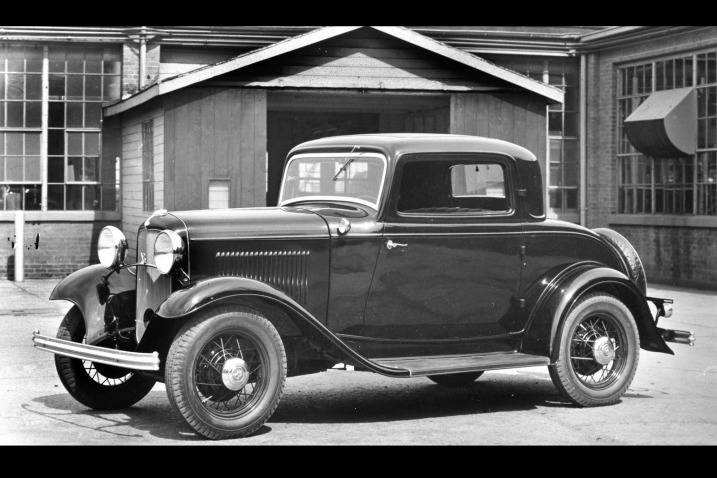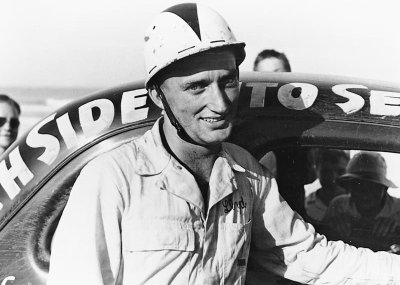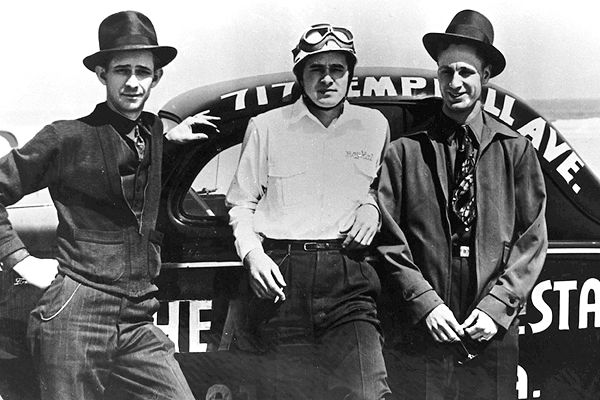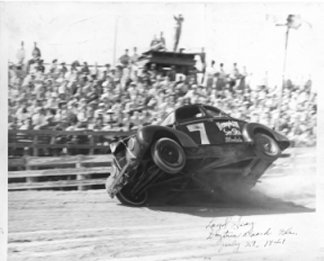NASCAR Rooted in Prohibition Bootlegging
Scroll to read more




NASCAR Rooted in Prohibition Bootlegging
From North Carolina to Spokane, Washington, bootleggers during Prohibition used “souped-up” automobiles to stay ahead of federal agents and local police while transporting illegal whiskey on back roads in the dark of night.
The idea was fairly simple – take a car that looked ordinary on the outside, modify the engine for greater speed, remove the floor boards, passenger and back seats to store as many cases of liquor as possible, install extra suspension springs to handle the weight, a dirt-protecting plate in front of the radiator and run the prohibited booze to customers by outsmarting or outrunning the authorities.
To elude federal Prohibition agents, sheriffs and cops on the road, these daring “runners” needed sharp driving skills to speed and maneuver along dirt, gravel, single-lane, and occasionally, paved roads after dark and at times with their headlights turned off.
Even before Prohibition came to an end in 1933, racing these high-performance cars became a popular pastime among the “runners” in North Carolina, Virginia, Tennessee, Georgia and elsewhere in the South. They raced each other’s cars, many of them Ford models, on weekend afternoons out in the country on makeshift dirt tracks. Such were the bootlegger roots of the stock car, and what would evolve into the National Association for Stock Car Auto Racing, or NASCAR, in 1947.
Booze runners looked for good mechanics who knew how to make their engines run faster and handle better than police vehicles. This became even more important in 1932, when Ford introduced its flathead V-8, with eight cylinders, a powerful car that runners started using as did police departments to keep pace.
By the nature of their illegal liquor business, veering fast along curvy, mountainous roads, runners taught themselves to be the best stock car drivers of the era and beyond. Although national Prohibition ended in 1933, production of illegal whiskey continued for years afterward to avoid taxes and regulations. Many future NASCAR drivers cut their teeth bootlegging illegal moonshine in the 1940s, such as NASCAR Hall of Famer Junior Johnson, who won his learner’s permit by running corn mash hooch before his NASCAR debut in 1955.
Edmund Fahey of Spokane, Washington, who smuggled cases of Scotch whiskey from Canada inside his modified Buick across the border in the early ’20s, wrote in his 1972 autobiography that runners had to guard against getting flats in the era’s flimsy tubed tires and be good roadside mechanics, almost like a race car driver and crew in one.
“The rum smuggler put his cars through mechanical tests as tough as those devised by test drivers,” he wrote. “Tires were put to the severest possible tests. Heavy loads, hauled over the toughest of roads often at reckless speeds, kept the rubber on your car always under the utmost strain. Therefore, the rum smuggler at all times used the best tires that could be bought. In fact, several companies developed tires especially for the rum-running trade. Many a runner served time in jail simply because his rubber failed him at some critical moment.”
Fahey dropped out of the runner’s racket after an arrest and six-month jail sentence in the mid-’20s and did not end up as a racer.
The legacy of the Prohibition runner went beyond casual backwoods racing in 1936, when the city of Daytona, Florida, held the first organized stock car race as a promotion. It lost money, but a Prohibition-era mechanic named Bill France, who placed fifth in the race, was determined to find a way to organize stock car racing. It took him more than a decade, but NASCAR’s organization set a single set of rules for racetracks and formalized the sport. The first NASCAR race was held in Daytona on February 15, 1948. The winner, in a modified Ford, was Red Byron, a former moonshine runner.
Next Story: Brewers and Distillers Found Creative Ways to Survive